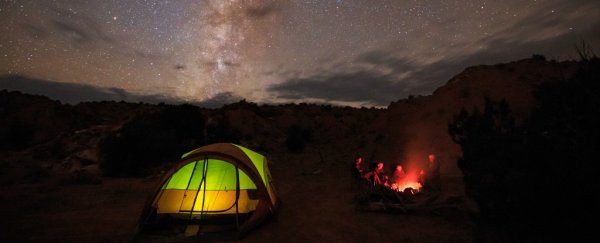Like an astronomical action movie, January is packed with planetary conjunctions, two supermoons with the second one blue, a lunar eclipse, meteors and increasing sunlight.
The new year's night sky starts with a full moon on Monday that rises at 4:52 pm EST and officially becomes full at 9:24 pm, according to the US Naval Observatory.
Since the Moon is at perigee - its closest point to Earth in the lunar cycle - it appears closer and people call it a supermoon. This is the closest perigee for 2018.
As a bonus, the lunar cycle brings a second full moon January 31 at 8:27 am In folk terms, the second one is nicknamed a blue moon. It's also a full moon close to perigee (January 30), making it another supermoon.
But wait - there's more about this Moon: The western United States also will enjoy an early morning total lunar eclipse on January 31. The Eastern states won't see much as they catch only the penumbral and partial phase before the Moon sets (Washington moonset is 7:15 am, concurrent with sunrise.)
States in the Mountain (6:30 am, mid-eclipse) and Pacific (5:30 am, mid-eclipse) time zones can witness the copper-toned totality.
Jupiter and Mars loiter together in the morning heavens. Early risers can see both planets high in the southeastern sky before sunrise.
The giant Jupiter, at -1.8 magnitude (bright) now, and our red neighbor Mars, at 1.5 magnitude (dim), huddle close for their pre-dawn conjunction on Saturday and January 7. They remain close for a few days, then slowly break apart, and the waning crescent moon joins the pair January 11.
Closer to the horizon, the fleet Mercury (-0.3 magnitude, bright) and the ringed Saturn (0.5 magnitude, dimmer) conjunct just above the treetops before dawn in the southeast on January 13.
Venus can't be seen, as the planet hides in the sun's glare for January and into February. Earth's charming neighbor effectively returns in March.
The Quadrantid meteors peak on Wednesday night into Thursday, and this cosmic show usually features a strong 120 meteors each hour during a short peak, according to the American Meteor Society.
But because of the bright, waning gibbous moon, sky gazers face a virtual wipeout and will be lucky to see a few shooting stars.
Earth gets closest to the Sun - an event called perihelion - on Wednesday at 12:35 am Eastern time, the Naval Observatory said. On our blue planet's annual tour around the sun, we will be a mere 91.4 million miles (147 million km) from it. So, why must we endure cold?
Earth's Northern Hemisphere is tilted away from the sun, creating winter. Earth reaches aphelion (farthest from the sun) in July.
Good news: The Northern Hemisphere gradually emerges from winter's darkness. On New Year's Day, Washington collects nine hours and 30 minutes of daylight, but on January 31, the city luxuriates in 10 hours and 13 minutes of light, according to the observatory.
2017 © The Washington Post
This article was originally published by The Washington Post.
